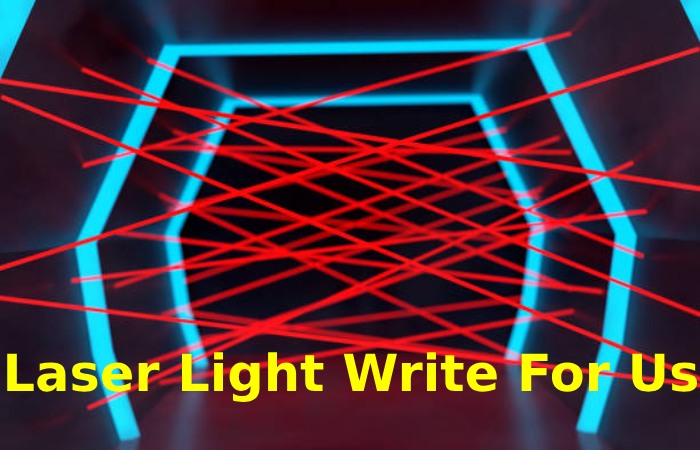Laser Light Write For Us
A laser, “Light Amplification by Stimulated Emission of Radiation,” emits a type of light known as coherent.
Information Tech Web has come a long way since its beginning in the United States. At a time when doubt is at its peak and information flows more and more complex, informationtechweb.com is dedicated today, even more than yesterday, to understanding the great news and innovations in the categories: Automotive, Technology, Culture, Business, Marketing, Gadgets, Sports, Beauty, Games and more. You can mail us at contact@informationtechweb.com
What Type of Light is a Laser?
Coherent light is distinct from ordinary light sources like incandescent bulbs or the sun, which emit incoherent light.
In incoherent light, the photons (particles of light) are all in phase, meaning they have the same wavelength and oscillate synchronized. This coherence results in several unique properties of laser light, such as its ability to travel in a narrow, focused beam over long distances without spreading out or diverging significantly. This characteristic makes lasers invaluable in various applications, from medical devices and communication systems to industrial cutting and scientific research.
What is Laser Light Used For?
Laser light is used for a wide array of applications across various fields. Its unique properties, including high intensity and coherence, make it valuable in numerous ways. In medicine, lasers are employed for precise surgeries, eye treatments, and skin procedures. In telecommunications, they enable high-speed data transmission through optical fibers. Manufacturing industries use laser cutting, welding, and engraving materials with remarkable precision.
Scientific research relies on lasers for spectroscopy, microscopy, and particle acceleration. Additionally, lasers play pivotal roles in barcode scanning, entertainment through laser shows, and even military applications like range finding and target designation. The versatility and efficiency of laser light continue to drive innovation across multiple sectors.
We provide opportunities for guest posting on contact@informationtechweb.com
Characteristics of Laser light
Laser light possesses several distinctive characteristics which set it apart from conventional light sources:
- Coherence: Laser light is coherent, meaning its photons have the same wavelength and move synchronously, resulting in a single, well-defined beam. This coherence allows lasers to maintain intensity over long distances without spreading significantly.
- Monochromaticity: Laser light is typically of a single, well-defined color or wavelength. This monochromatic nature is useful in applications like spectroscopy and precision measurements.
- Directionality: Lasers emit highly directional beams, which can be tightly focused or collimated. This property makes them suitable for cutting, engraving, and guiding light in optical systems.
- High Intensity: Laser light can be extremely intense, delivering concentrated and powerful energy in its beam. This high intensity is harnessed in various applications, including material processing and medical procedures.
- Coherence Length: Lasers have a long coherence length, meaning the phase relationship between photons is maintained over extended distances. This property is essential in applications like interferometry.
- Polarization: Laser light can have a well-defined polarization, which is useful in optical communications and some scientific experiments.
- Temporal Stability: Lasers exhibit excellent temporal stability, with minimal fluctuations in their output over time. This stability is crucial in applications like laser-based metrology.
- Narrow Linewidth: Laser light has a very narrow linewidth, which means it has a well-defined frequency or wavelength. It is advantageous in applications like atomic clocks and high-resolution spectroscopy.
- High Energy Density: The intense, focused nature of laser light results in high energy density, making lasers capable of cutting, welding, and vaporizing materials.
These unique characteristics of laser light enable various applications across industries, from scientific research and medical treatments to telecommunications and manufacturing processes.
Types of Lasers
Lasers come in various types, each designed for specific applications based on their operating principles and characteristics. Some common types of lasers include:
- Gas Lasers: These lasers use a gas as the active medium. Examples include the helium-neon (HeNe) laser for scientific and educational purposes and the carbon dioxide (CO2) laser for cutting and engraving materials.
- Solid-State Lasers: These lasers use solid materials as the gain medium, such as crystals or glasses doped with rare-earth ions. Examples include the Nd: YAG laser used in welding and medical procedures and the ruby laser.
- Semiconductor Lasers: Also known as diode lasers, they use a semiconductor as the gain medium. They are widely used in optical communication, laser pointers, and barcode scanners.
- Fiber Lasers: These lasers utilize optical fibers as the gain medium. They are highly efficient and used in various applications, including laser marking, materials processing, and telecommunications.
- Dye Lasers: Dye lasers use organic dye molecules as the gain medium and are tunable across various wavelengths. They find applications in spectroscopy and research.
- Excimer Lasers: These lasers use a mixture of reactive gases to produce short ultraviolet wavelengths. They are employed in semiconductor manufacturing and eye surgery (LASIK).
- Free-Electron Lasers: These large-scale, research-oriented lasers generate coherent radiation using high-speed electrons in a linear accelerator. They are valuable for high-energy physics experiments and synchrotron light sources.
- Chemical Lasers: These lasers utilize chemical reactions to create the laser beam. They have been used in military applications and high-energy research.
- Femtosecond Lasers: These ultra-fast lasers produce extremely short pulses on the order of femtoseconds (quadrillionths of a second). They are used in cutting-edge research, micromachining, and eye surgery.
- Each type of laser has unique advantages and is tailored for specific tasks, making lasers a versatile tool across numerous industries, from healthcare and manufacturing to telecommunications and scientific research.
How to Update Your Articles?
E-mailing us at contact@informationtechweb.com is the quickest way to reach us.
Why Write for Information Tech Web – Laser Light Write For Us
 Writing for Information Tech Web can expose your website to customers looking for a Laser Light.
Writing for Information Tech Web can expose your website to customers looking for a Laser Light.- Information Tech’s Web presence is on Social media, and they will share your article with the Laser Light-related audience.
- You can reach out to Laser Light enthusiasts.
Search Terms Related to Laser Light Write For Us
- Light
- Optical amplification
- Stimulated emission
- Electromagnetic radiation
- Coherent
- Spatial coherence
- Laser cutting
- Lithography
- Laser pointers
- Lidar
- Temporal coherence
- Ultrashort pulses
- Femtosecond
- Optical disc drives
- Laser printers
- Barcode scanners
- DNA sequencing instruments
- Fiber-optic
- Free-space optical communication
- Laser surgery
- Laser lighting displays
- Light-emitting diodes (LEDs)
Search Terms for Laser Light Write For Us
Write For Us Laser Light
Guest Post Laser Light
Contribute Laser Light
Laser Light Submit Post
Laser Light writers wanted
Guest author Laser Light
Laser Light Write For Us
Laser Light Guest Post
Become a guest blogger on Laser Light
Laser Light suggests a post
Submit Post Laser Light
Laser Light to submit an article
Article Guidelines on Information Tech Web – Laser Light Write for Us
- Information Tech Web welcomes fresh and unique content related to Laser Light.
- Information Tech Web allows at least 500+ words related to Laser Light.
- The editorial team of Information Tech’s Web does not encourage promotional content related to Laser Light.
- For publishing an article at Information Tech Web, please e-mail us at contact@informationtechweb.com
- Information Tech Web allows articles related to Computers, Technology, Economy, Forex/Trading, Crypto, Marketing, Business, Etc.

